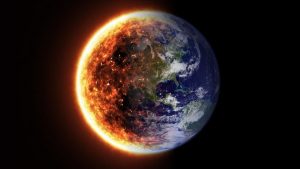The world now has a 50% chance of crossing the global warming threshold of 1.5 degree Celsius over pre-industrial levels by 2026, the World Meteorological Organization (WMO) warned on Monday as it urged for intensified efforts to reduce emissions.
The WMO added that although the world was likely to cross the 1.5 degree threshold temporarily, even such a transient lapse would offer a glimpse into the climate catastrophe that is expected to unfold if global temperatures continue to rise in the long run.
“We are getting measurably closer to temporarily reaching the lower target of the Paris Agreement,” WMO Secretary-General Petteri Taalas said on Monday, referring to the landmark international accord signed in 2015.
Also read | 104,000 acre wildfire, largest in US, sparks evacuation in New Mexico
That being said, breaching this lower threshold had been on the cards for a while now: the probability of crossing the 1.5 degree mark had been on the rise since 2015. Scientists in 2020 estimated that there was a 20% chance of crossing the threshold by 2025, and that estimate was subsequently revised to 40% in 2021.
So what happens if the world breaches the threshold?
Even a temporary crossing of the threshold, say for about a year, would result in ecological and climate disasters, such as the death of coral reefs across the world and the shrinking of Arctic ice cover.
Also read | 40% tropical forest cover loss in 2021 was from Amazon deforestation: Study
“It’s important to remember that once we hit 1.5C, the lack of science-based emissions policies mean that we will suffer worsening impacts as we approach 1.6C, 1.7C, and every increment of warming thereafter,” Georgia Institute of Technology climate scientist Kim Cobb told Reuters commenting on the projection.
However, while the projected breach of the threshold is expected to be temporary for now, the real danger lies in long-term average temperature rises.
As it stands, the average global temperature has risen 1.1 degrees Celsius since the pre-industrial average, but current policies and emission levels suggest that average global temperature rise would cross 3.2 degrees Celsius by the end of the century, at which point climate change would be well-beyond human control.







